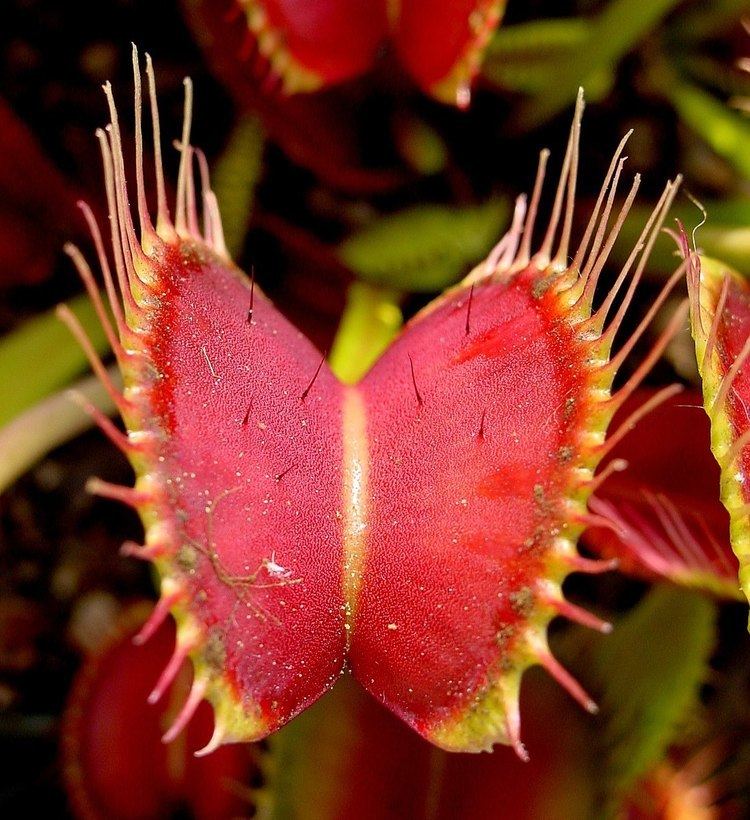 | ||
Rapid plant movement encompasses movement in plant structures occurring over a very short period, usually under one second. For example, the Venus flytrap closes its trap in about 100 milliseconds. The dogwood bunchberry's flower opens its petals and fires pollen in less than 0.5 milliseconds. The record is currently held by the white mulberry tree, with flower movement taking 25 microseconds, as pollen is catapulted from the stamens at velocities in excess of half the speed of sound—near the theoretical physical limits for movements in plants.
Contents
- Plants that capture and consume prey
- Plants that move leaves for other reasons
- Plants that spread seeds or pollen by rapid movement
- References
These rapid plant movements differ from the more common, but much slower "growth-movements" of plants, called tropisms.
In 1880 Charles Darwin published The Power of Movement in Plants, his last work before his death.
